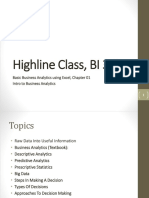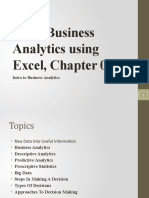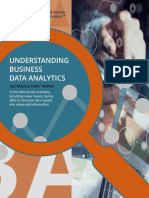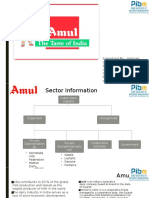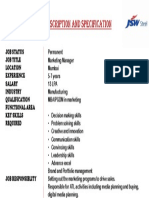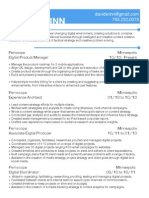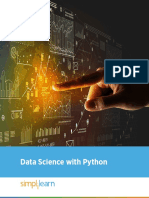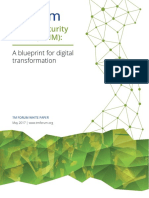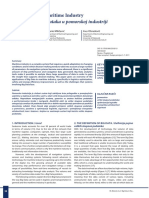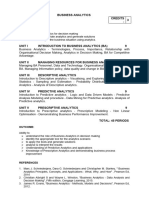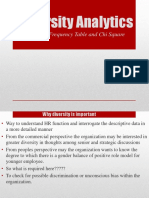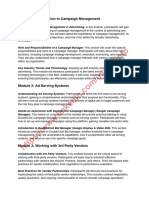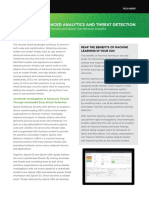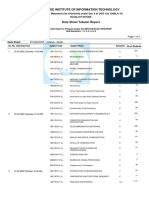0% found this document useful (0 votes)
100 views45 pagesData Analysis & Decision Making
This document provides an overview of data analysis and analytics. It discusses the decision making process and how data-driven decision making can help reduce risk and increase productivity and profitability. It defines data analysis and analytics and explains their relationship. The document outlines the key outcomes of data analysis, including insights, and different forms of data like numeric, text, images and geospatial data. It also discusses how data is generated and acquired from different sources and the concepts of data ownership and governance. Finally, it states that data analysis is practiced to help functions like marketing, finance and operations make better decisions.
Uploaded by
Puja AgarwalCopyright
© © All Rights Reserved
We take content rights seriously. If you suspect this is your content, claim it here.
Available Formats
Download as PDF, TXT or read online on Scribd
0% found this document useful (0 votes)
100 views45 pagesData Analysis & Decision Making
This document provides an overview of data analysis and analytics. It discusses the decision making process and how data-driven decision making can help reduce risk and increase productivity and profitability. It defines data analysis and analytics and explains their relationship. The document outlines the key outcomes of data analysis, including insights, and different forms of data like numeric, text, images and geospatial data. It also discusses how data is generated and acquired from different sources and the concepts of data ownership and governance. Finally, it states that data analysis is practiced to help functions like marketing, finance and operations make better decisions.
Uploaded by
Puja AgarwalCopyright
© © All Rights Reserved
We take content rights seriously. If you suspect this is your content, claim it here.
Available Formats
Download as PDF, TXT or read online on Scribd
/ 45

